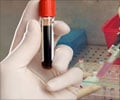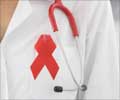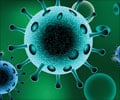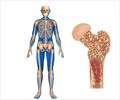Gottlieb MS, Schroff R, Schanker HM, et al. Pneumocystis carinii pneumonia and mucosal candidiasis in previously healthy homosexual men: evidence of a new acquired cellular immunodeficiency. N Engl J Med. 1981; 305:1425-31.
- AIDSinfo - (http://www.aidsinfo.nih.gov/)
Kaposi's sarcoma
Kaposi sarcoma develops below the skin surfaces or in mucous membranes of mouth, nose or anus and appears as lumps.

Kaposi sarcoma (KS) was named for Dr. Moritz Kaposi who first described it in 1872. Kaposi's sarcoma (KS) was a rare form of relatively benign cancer that usually occurred in older people who are of Mediterranean origin or cancer or transplant patients undergoing immunosuppressive therapy. Most KS cases have developed in association with human immunodeficiency virus (HIV) infection and the acquired immunodeficiency syndrome (AIDS), especially among homosexual men. This is called AIDS-related Kaposi sarcoma. This disease typically causes tumors to develop in the tissues below the skin surface, or in the mucous membranes of the mouth, nose, or anus. These lesions (abnormal tissue areas) appear as raised blotches or lumps that may be purple, brown, or red.
Sometimes the disease causes painful swelling, especially in the legs, groin area, or skin around the eyes. Extensive lung involvement by KS can be fatal. In 40% or more of patients with AIDS-associated Kaposi's sarcoma, the Kaposi lesions will shrink upon first starting highly active antiretroviral therapy (HAART).

















